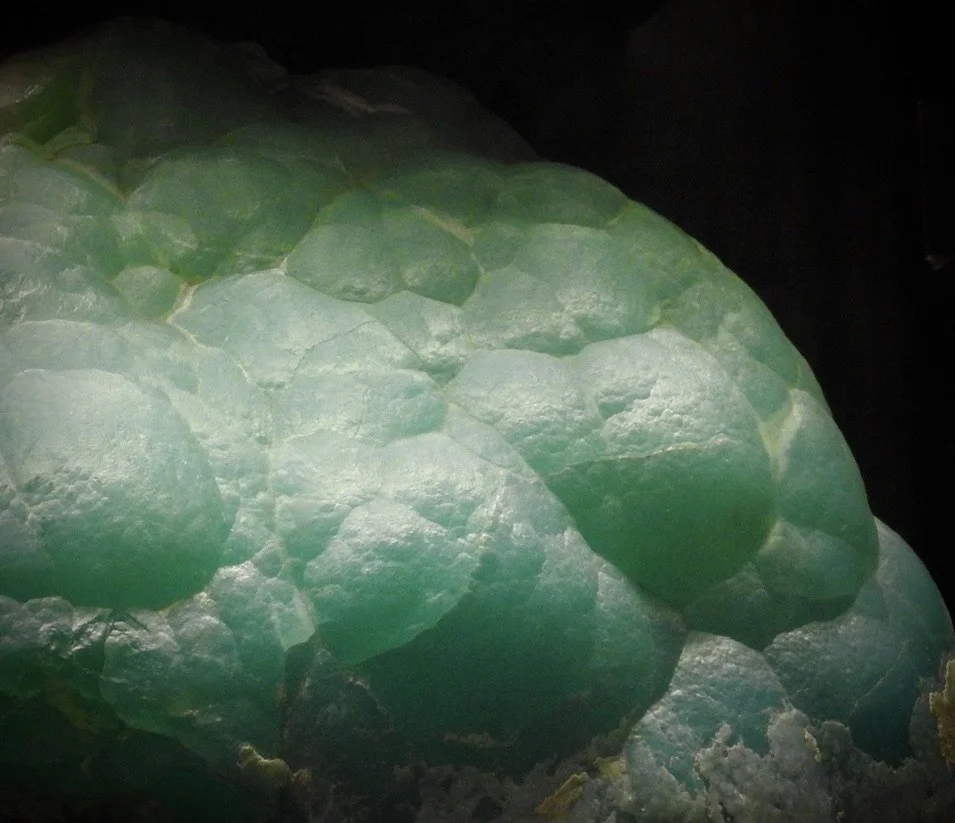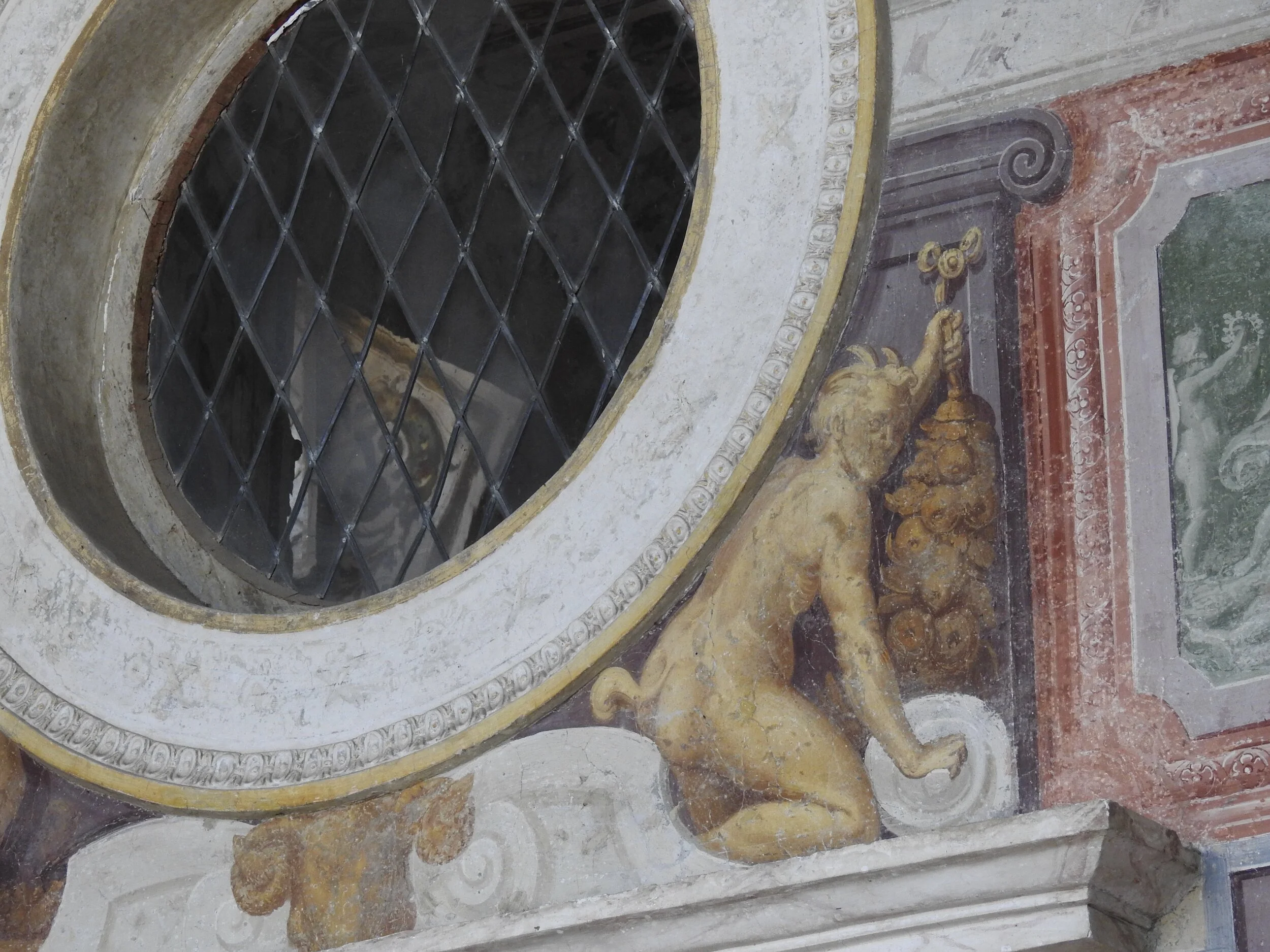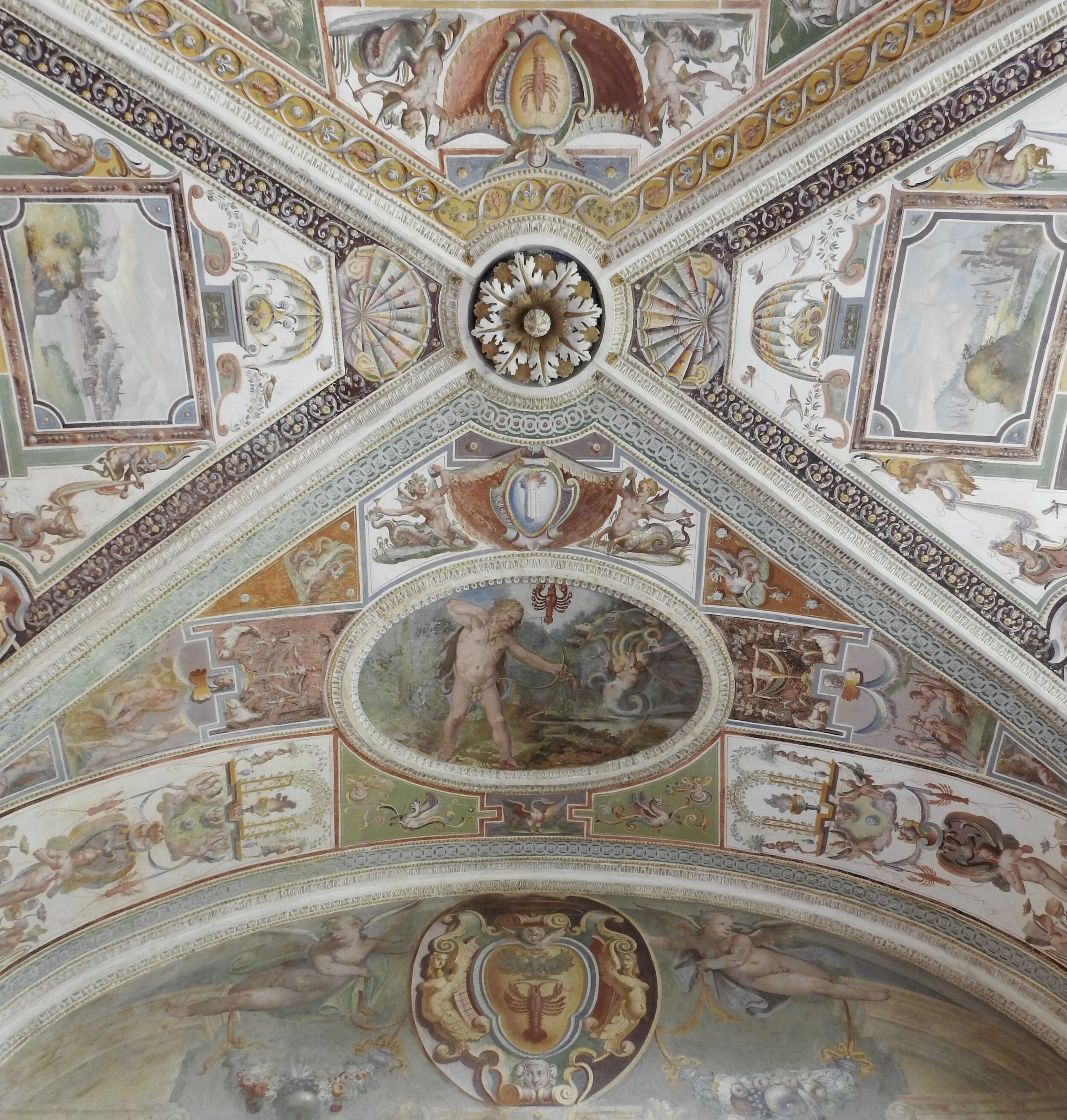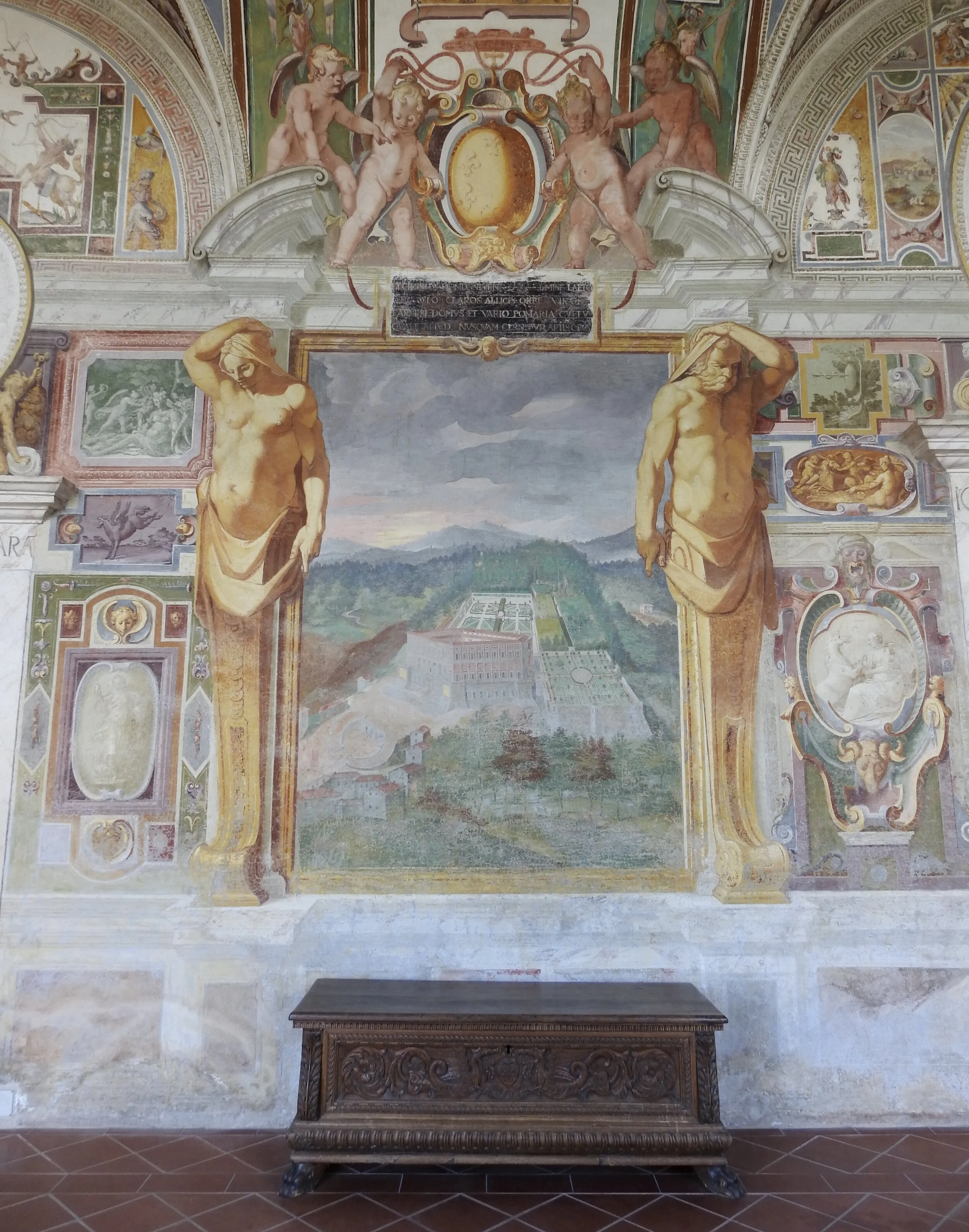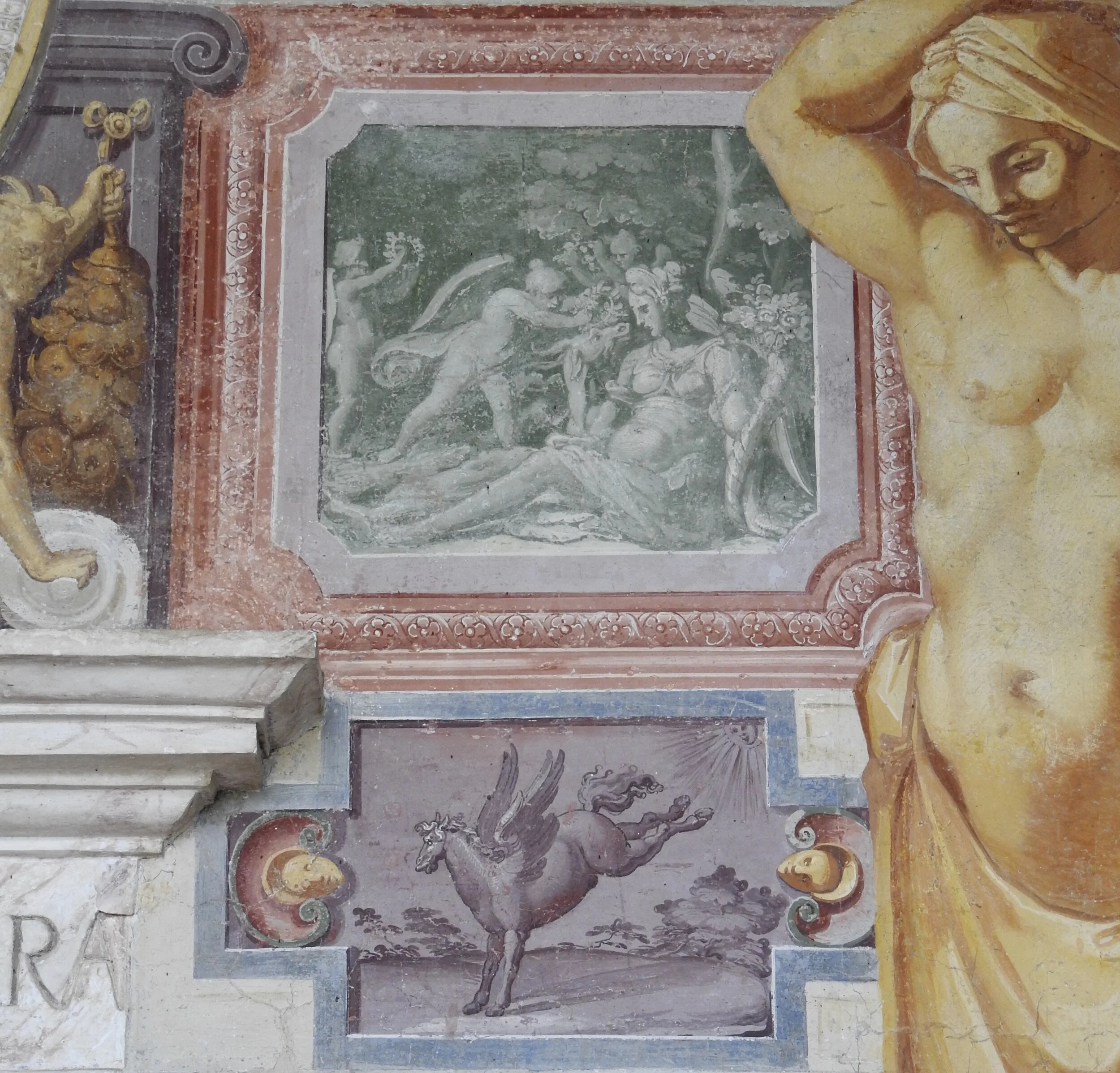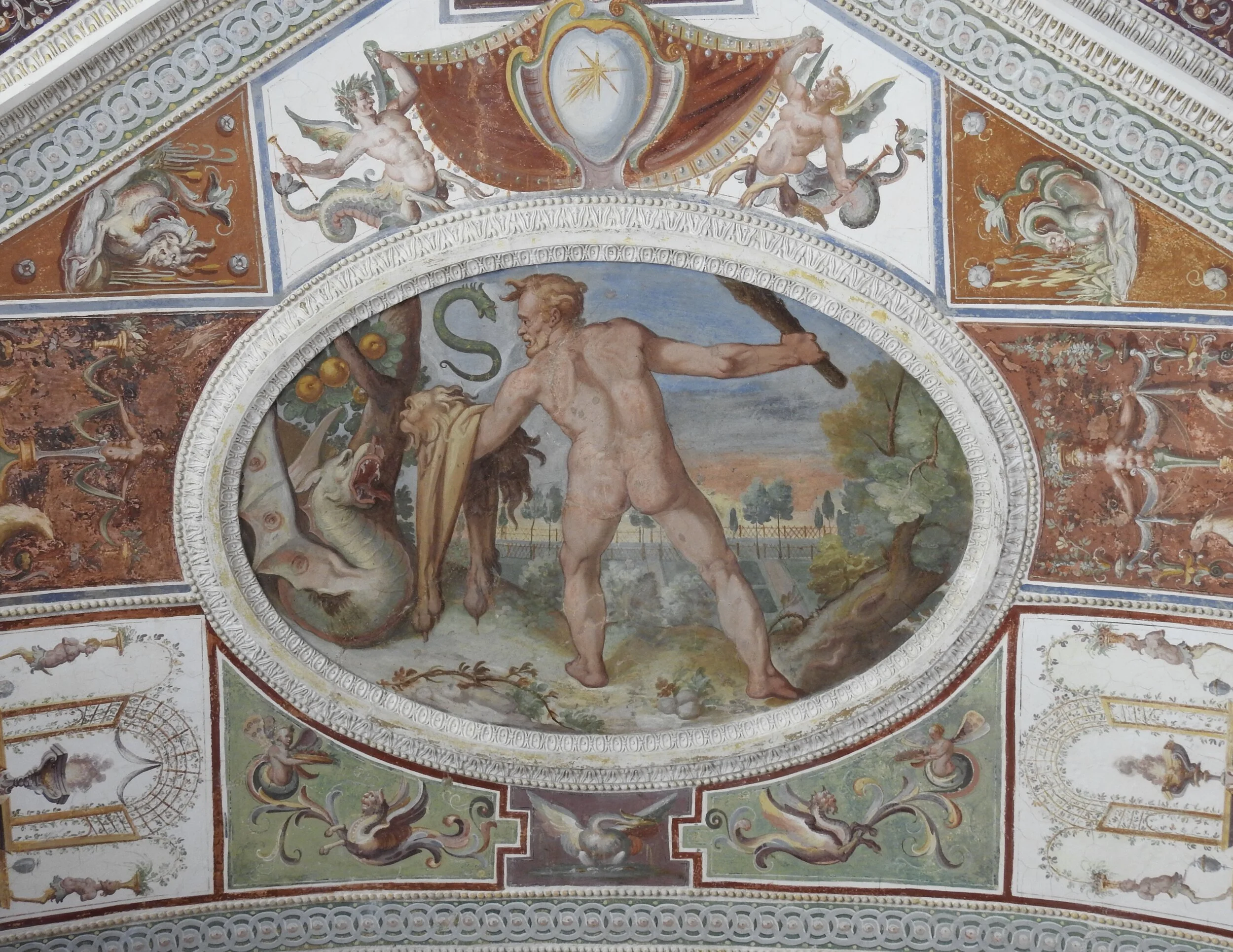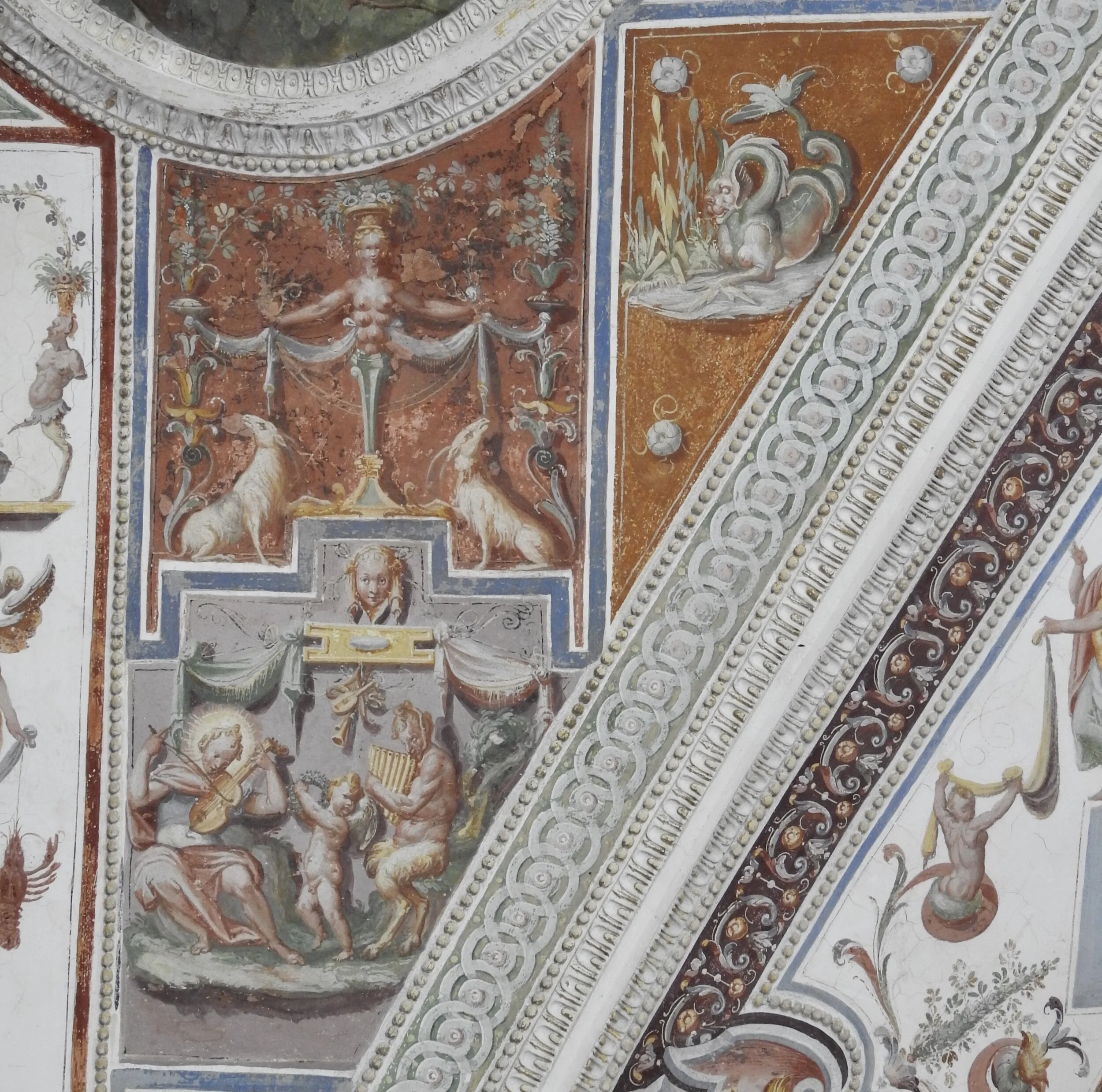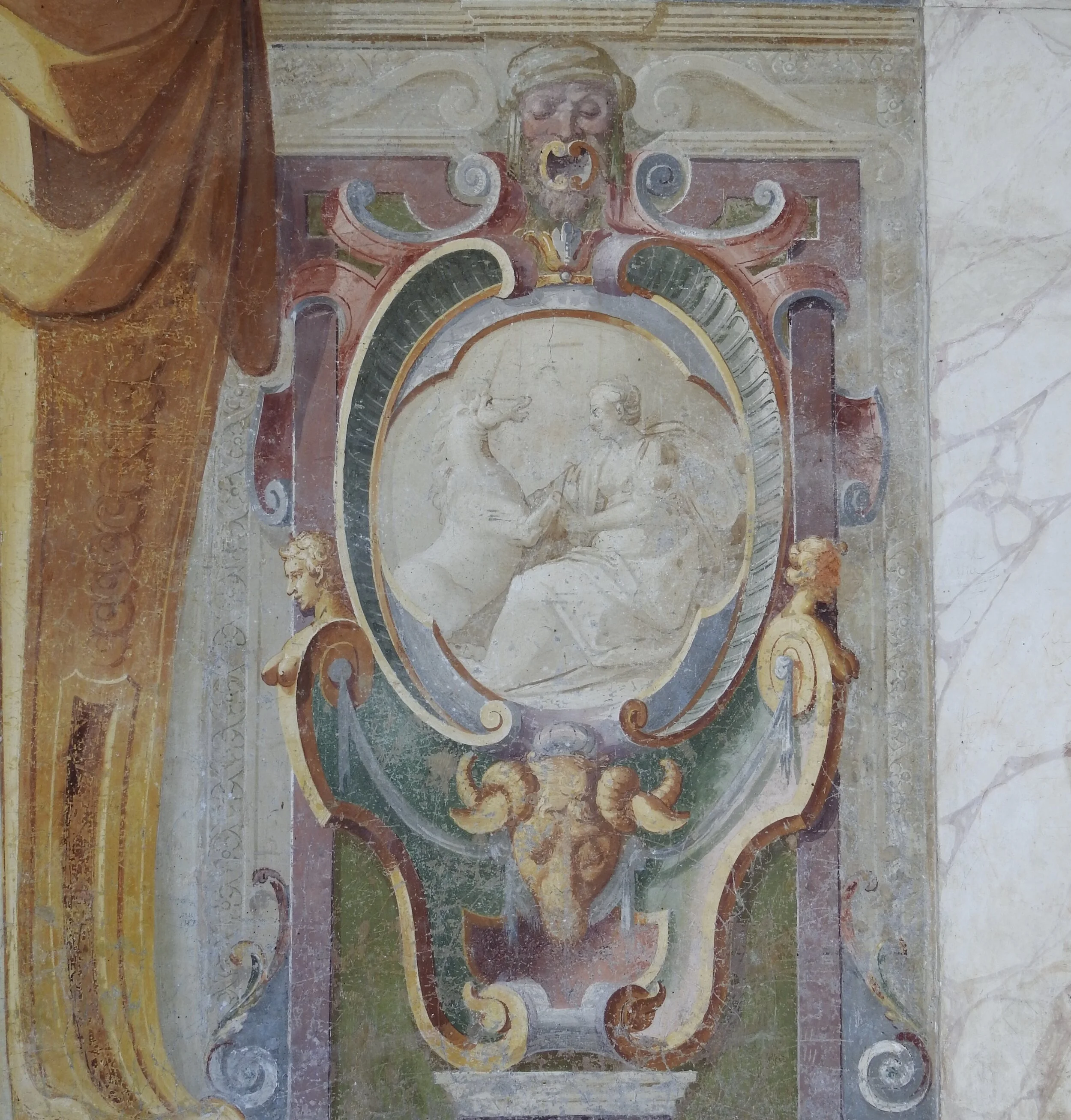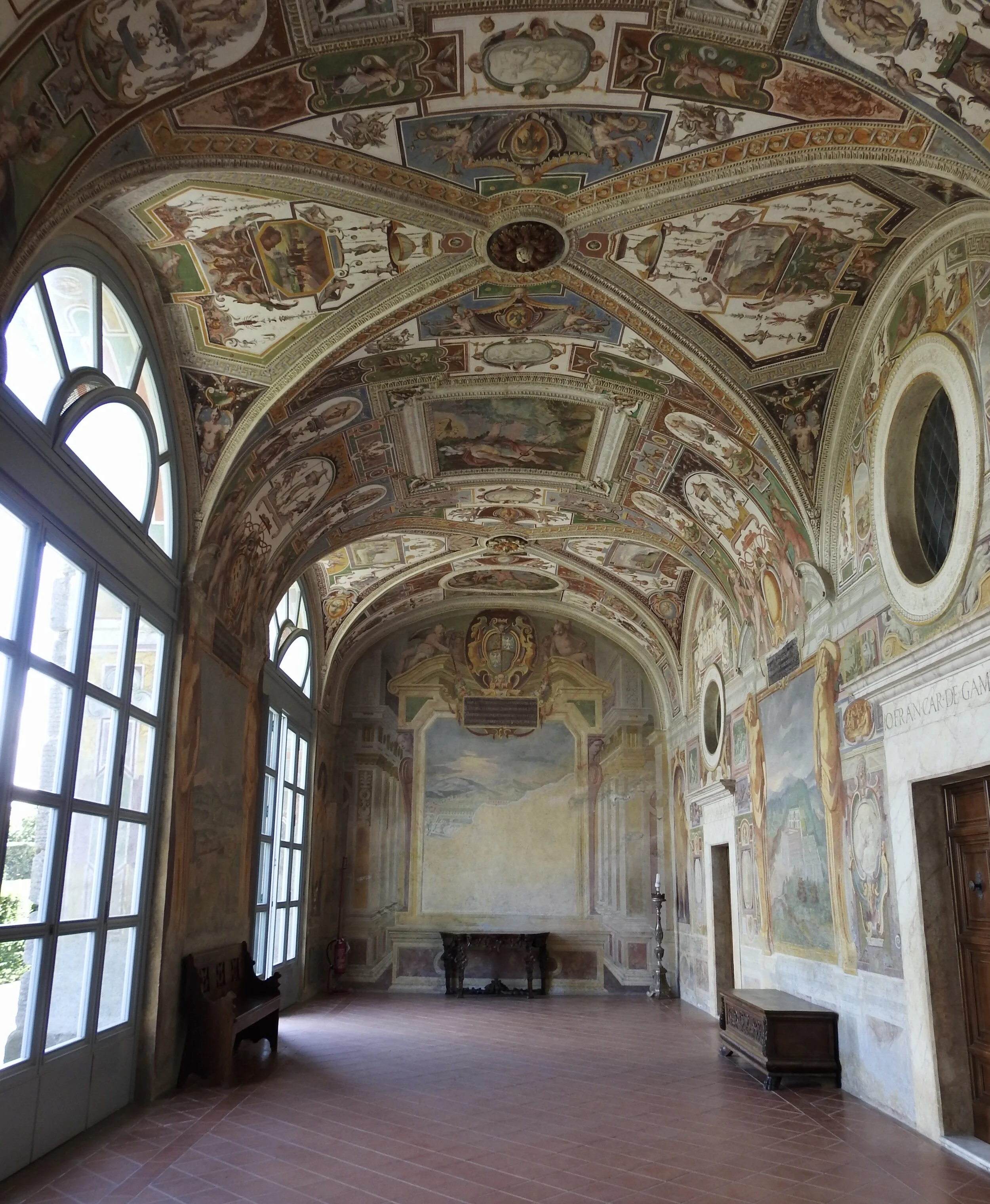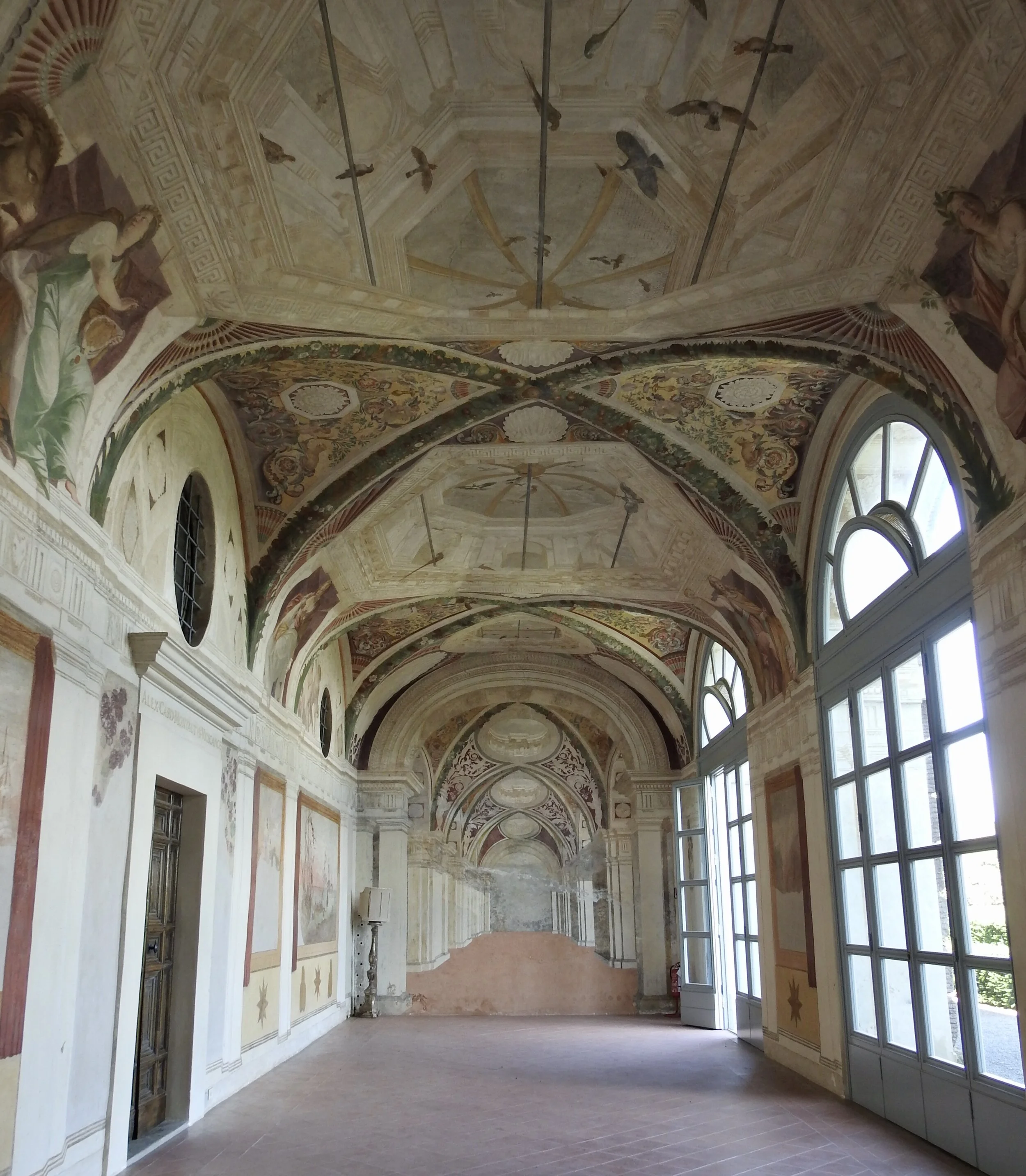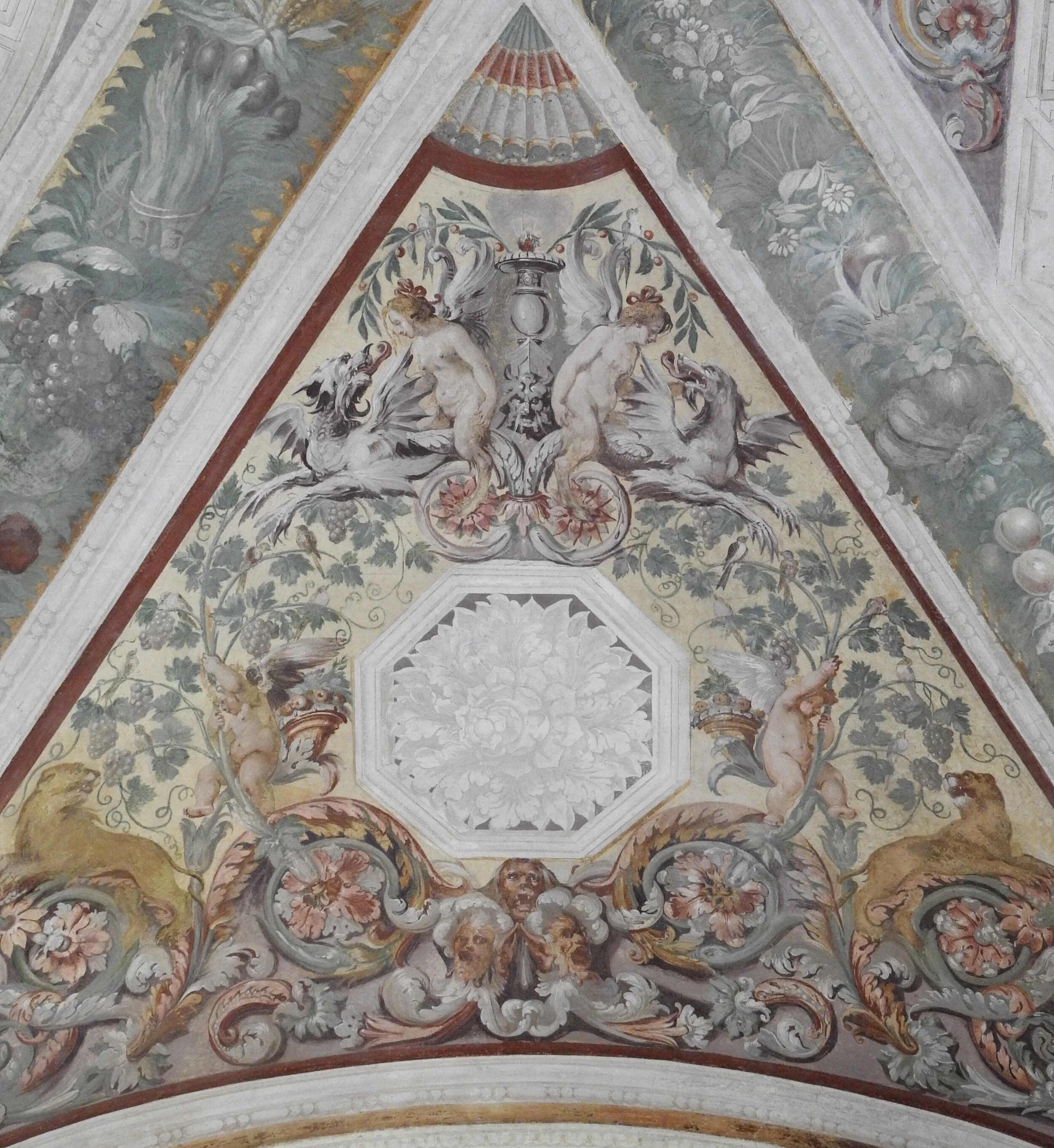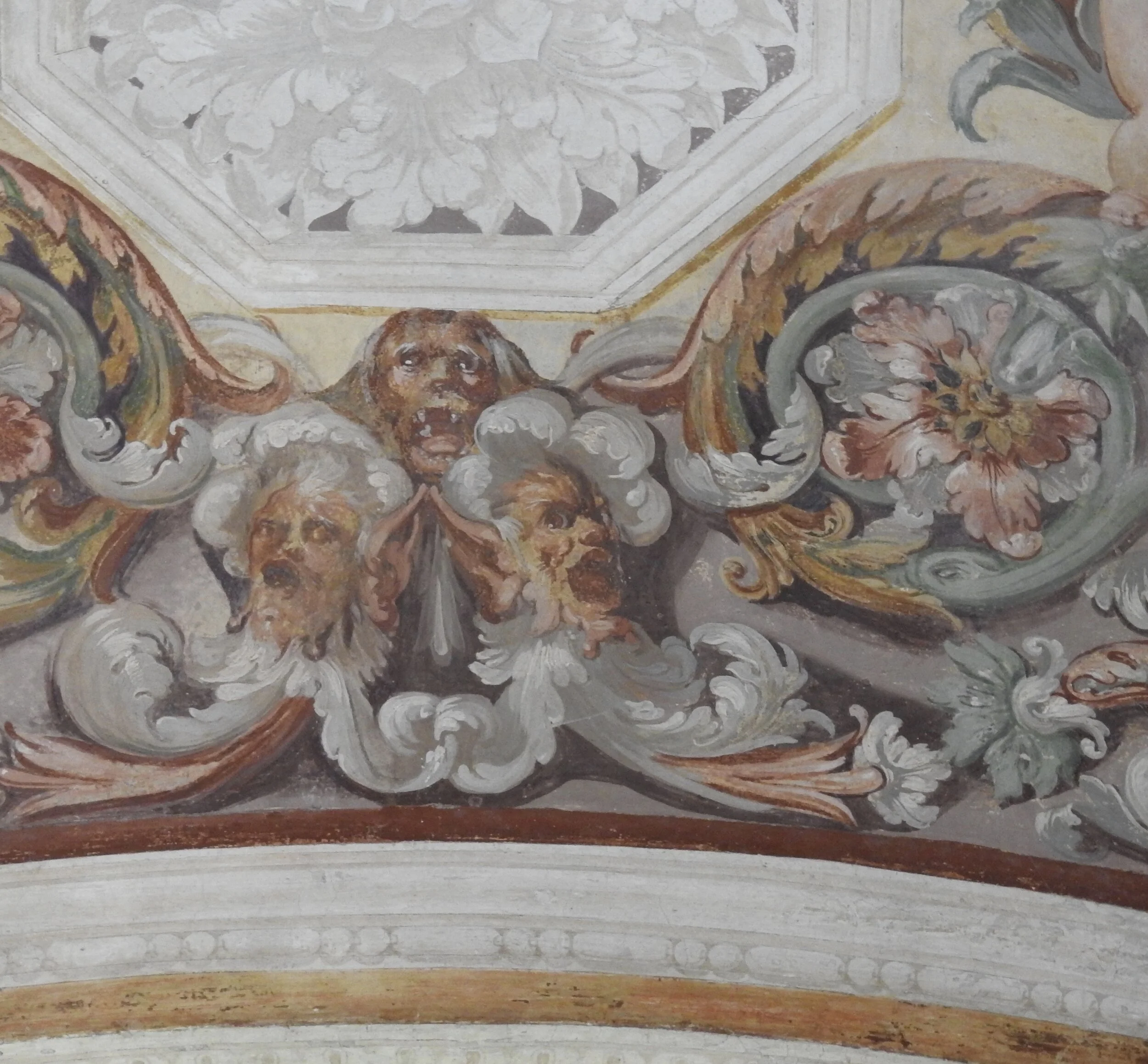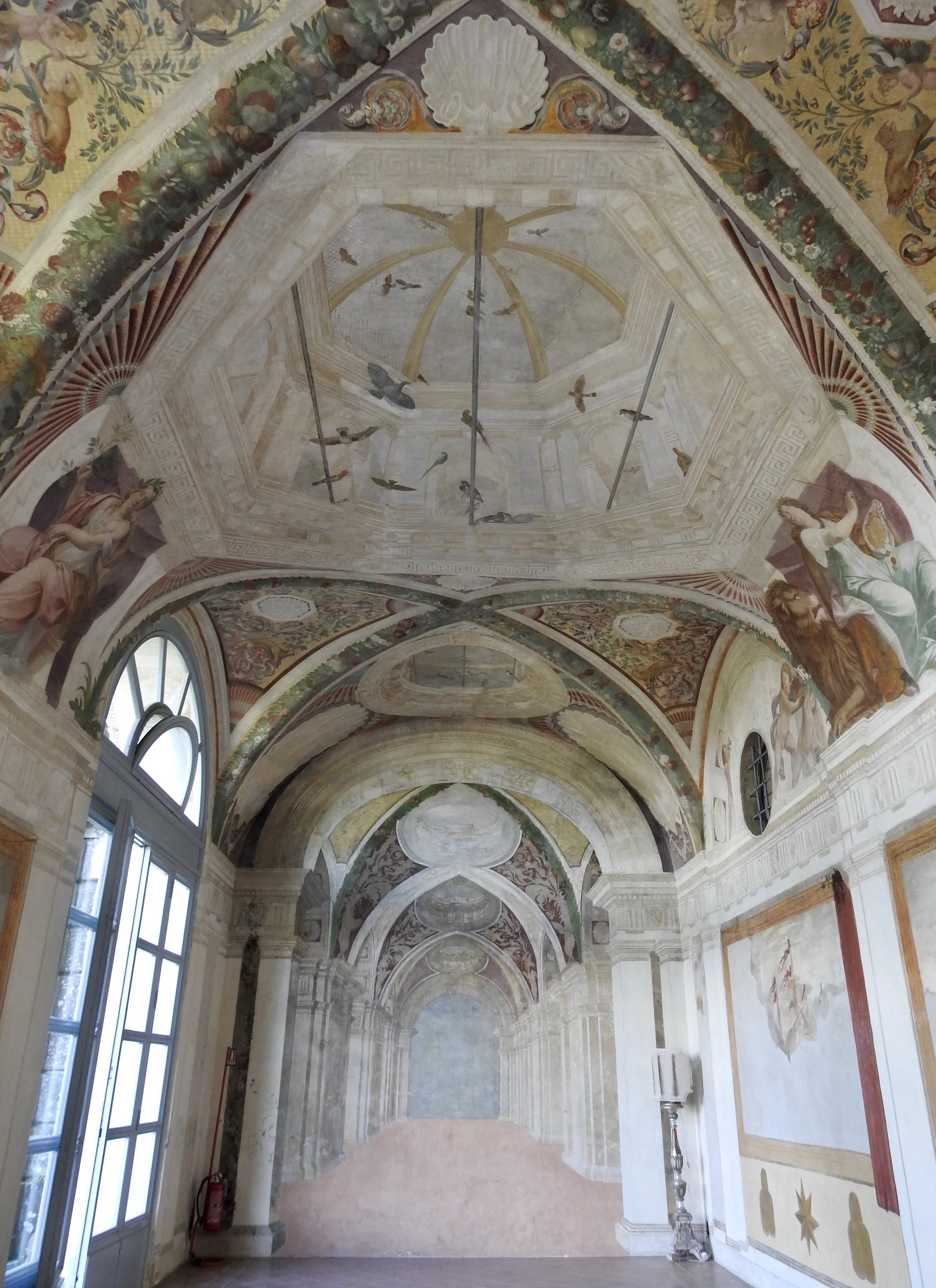Two box-like palazzine—a term which can usually be translated as small buildings, but in this case really means small palaces or villas—rise from the southern corners of Villa Lante’s lowest gardens. From their exteriors, the structures appear as twins with the same (or roughly the same) dimensions, materials, and stark features. However, the two were actually built about thirty years apart under different owners, a fact their stylistically and thematically divergent interior decoration makes readily apparent.
The late Renaissance frescoes filling the loggia of Palazzina Gambara (c. 1568–78) are structured much like the gardens themselves, with imagery divided into discreet compartments and filled with personal and political symbols (like Cardinal Gambara’s emblematic shrimp), grotesques, and nods to classical mythology. These elements surround large depictions of central Italy’s great Renaissance villas and gardens, including Villa d’Este, Palazzo Farnese, and Villa Lante itself.
Conversely, a far more integrated and less overtly political Baroque design envelopes the loggia of Palazzina Monalto (1590–1612). Here, the ceiling is covered with trompe l’oeil depictions of skylights and birds. This illusion even carries into the room’s two narrow walls, which are painted to suggest the continuation of the loggia far beyond its actual ends. Grotesques and mythological figures appear as well, but take a more limited role and are painted in broader, looser brushwork than found in the older palazzina.
Only the loggia of each building is open to the public. For more information on the surrounding gardens and their history, see my previous photo-essay on Villa Lante. You can also find more about the buildings themselves from these useful links:
Traveling in Tuscany, “Gardens in Italy: Villa Lante”
Villa Lante, “Palazzina Montalto” and “Palazzina Gambara”
